Abstract
A new recombination system for the production of live attenuated influenza-A vaccine strains is described. The attenuated parent is the Japanese strain A/Okuda/57 (H2N2) which has a known passage history and a good record of human safety. This virus has been recombined with two recent field isolates, A/England/42/72 and A/Finland/4/74, and in each case several recombinants were isolated and tested in volunteers. These recombinants differed in their degree of attenuation, but on each occasion it was possible to choose one that was suitably attenuated for a candidate vaccine strain. The genetic stability of such a recombinant produced with the A/England/42/72 strain was demonstrated by subjecting it to three successive human passages. A single intra-nasal dose of the A/Finland/4/74 recombinant vaccine gave a seroconversion rate of 75%.
This recombination system offers considerable advantages for the production of live influenza virus vaccines.
Full text
PDF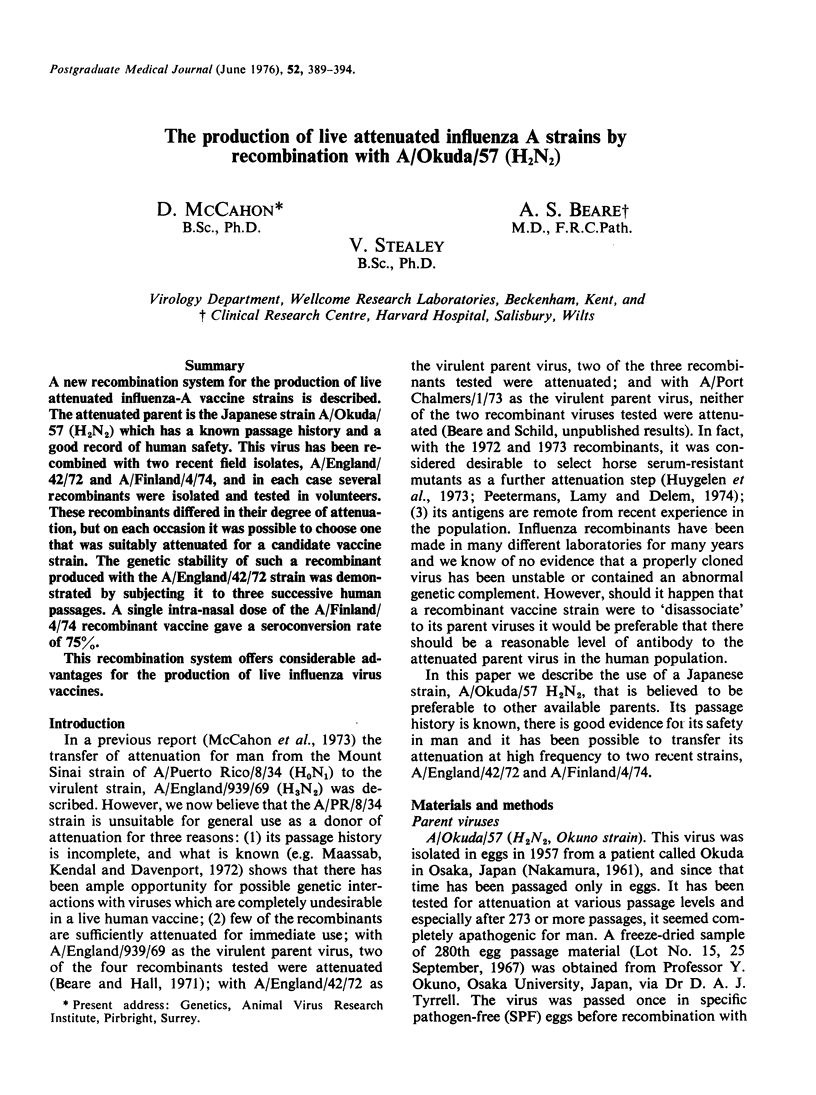
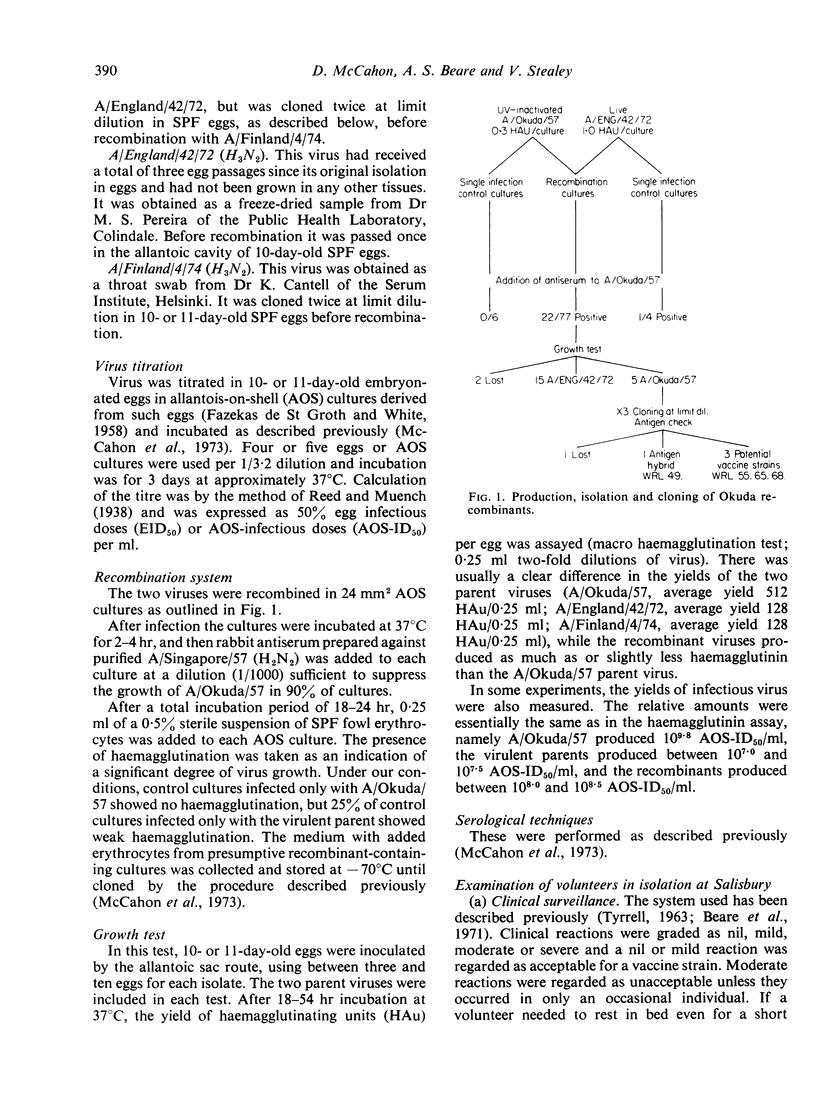
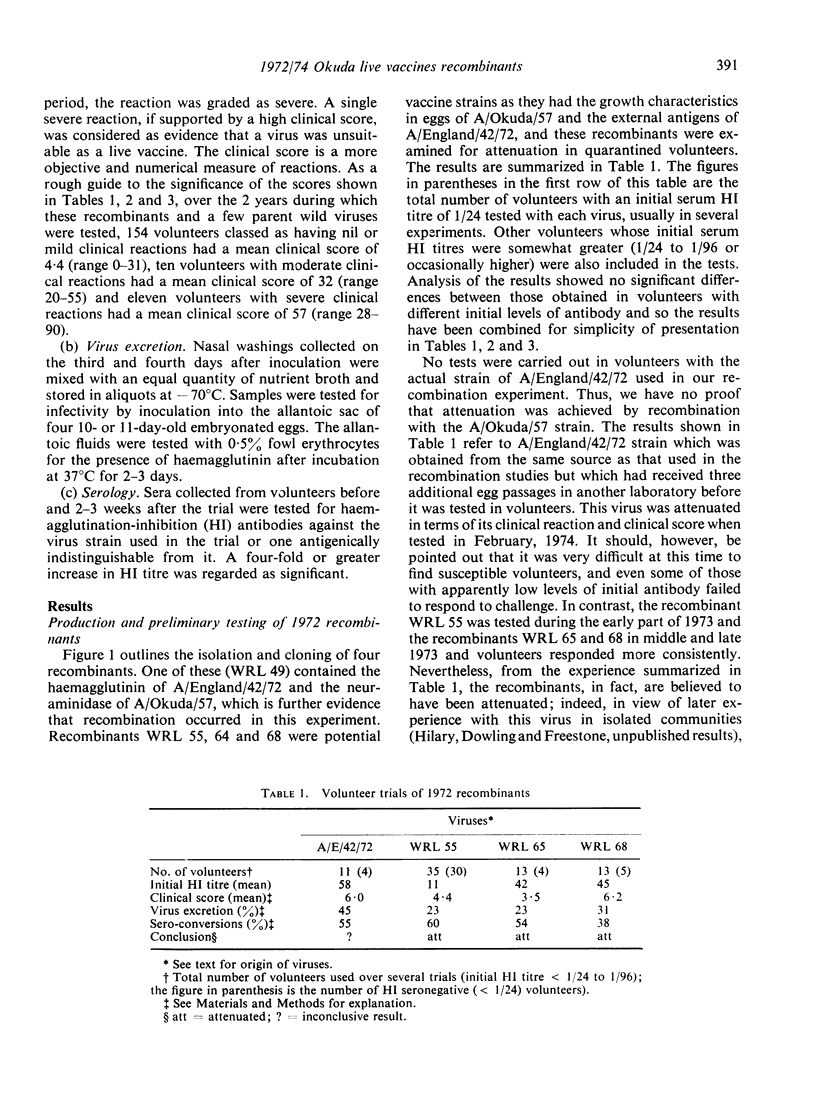
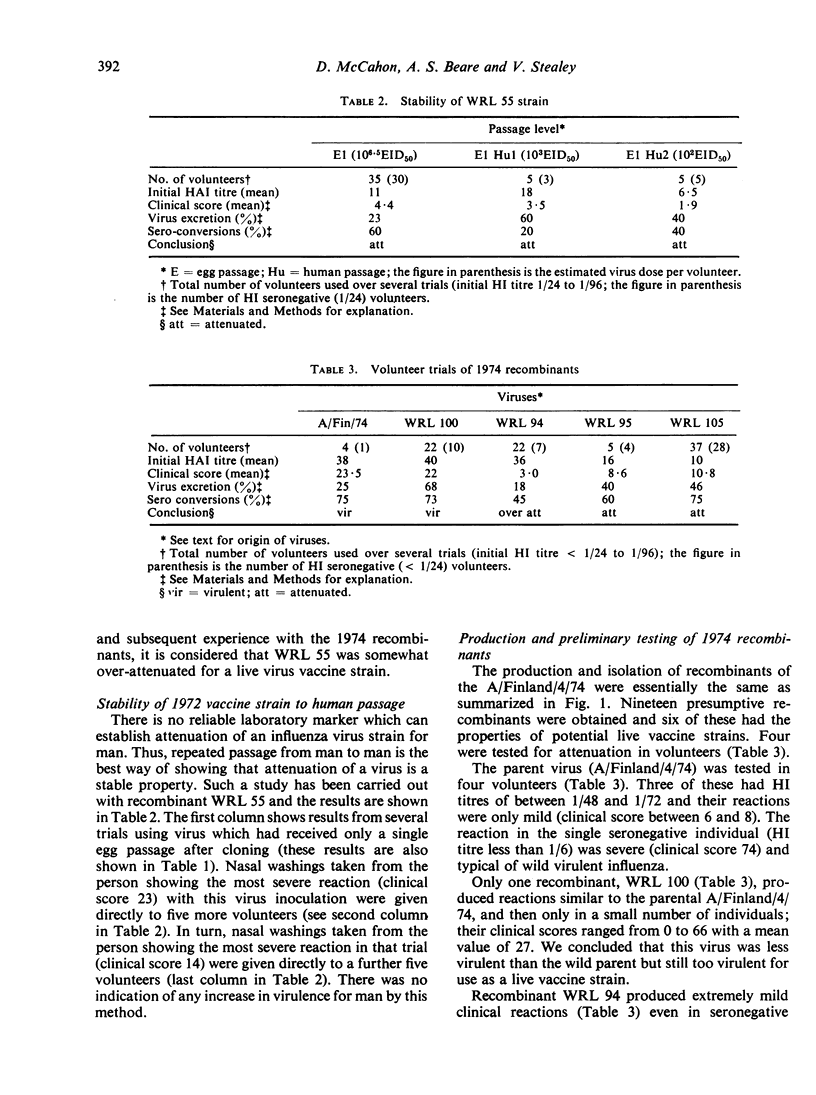
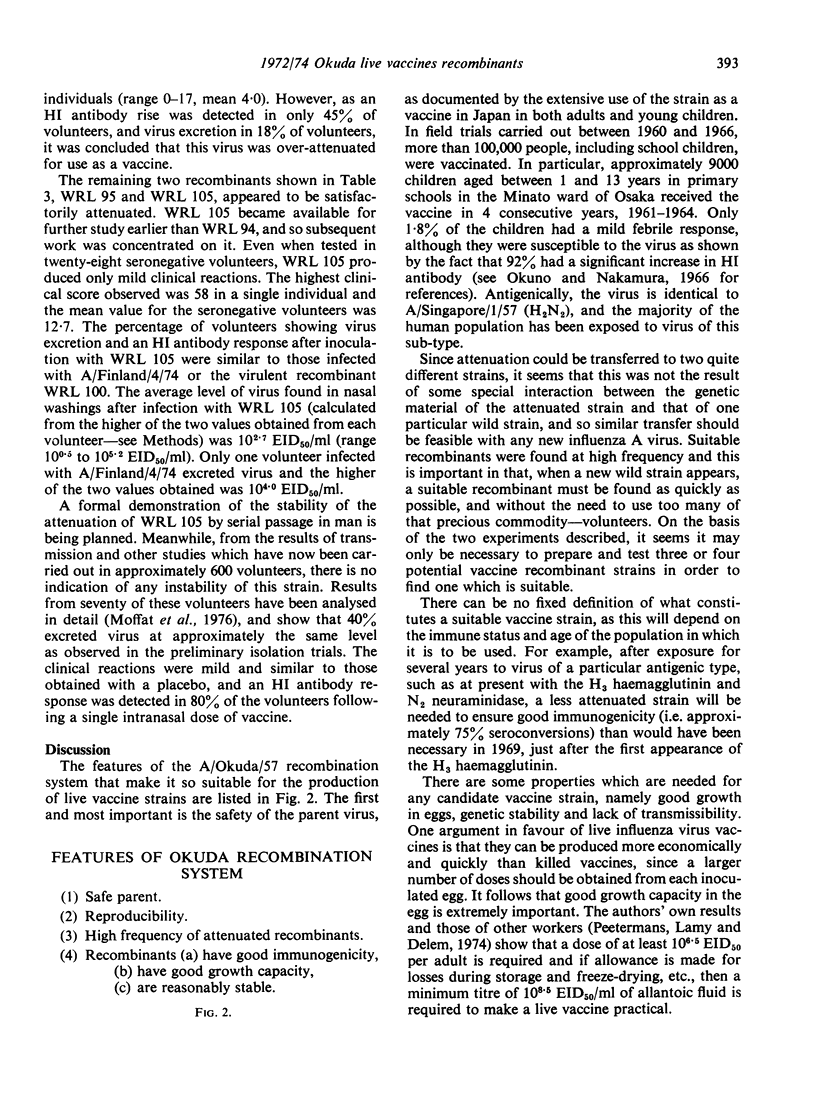
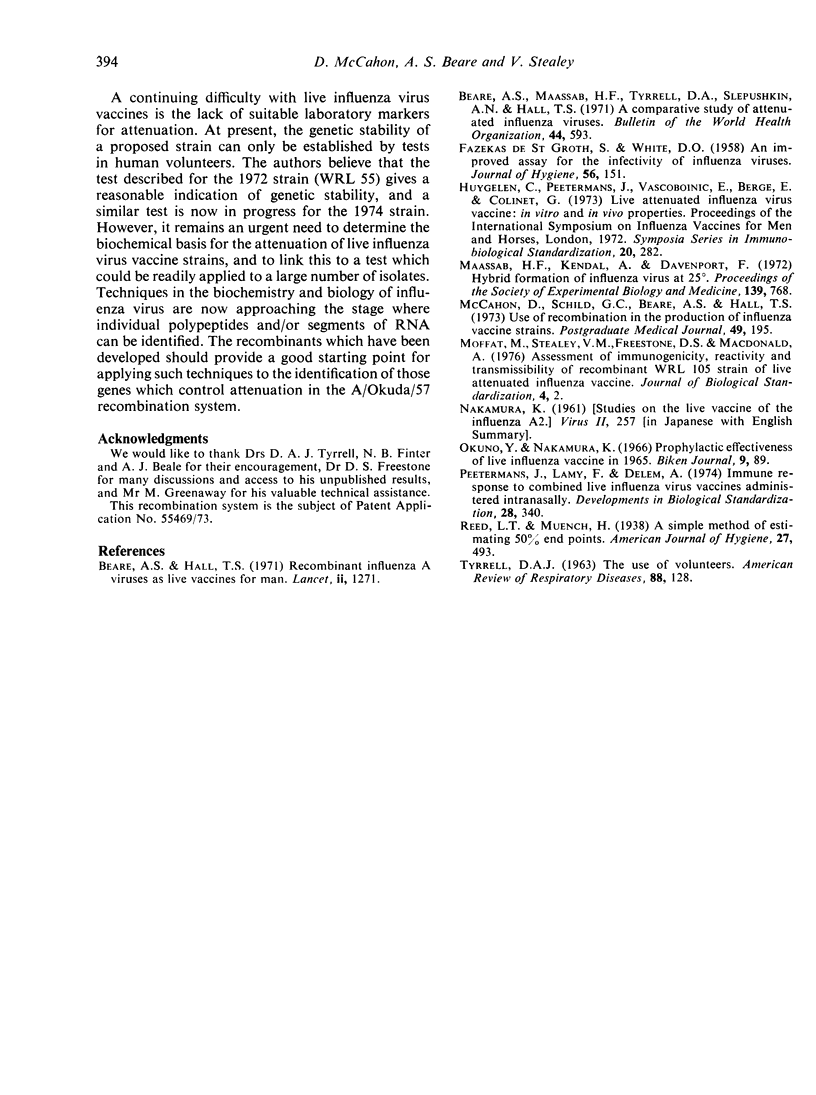
Selected References
These references are in PubMed. This may not be the complete list of references from this article.
- Beare A. S., Hall T. S. Recombinant influenza-A viruses as live vaccines for man. Report to the Medical Research Council's Committee on Influenza and other Respiratory Virus Vaccines. Lancet. 1971 Dec 11;2(7737):1271–1273. doi: 10.1016/s0140-6736(71)90597-6. [DOI] [PubMed] [Google Scholar]
- Beare A. S., Maassab H. F., Tyrrell D. A., Slepuskin A. N., Hall T. S. A comparative study of attenuated influenza viruses. Bull World Health Organ. 1971;44(5):593–598. [PMC free article] [PubMed] [Google Scholar]
- FAZEKAS DE ST GROTH S., WHITE D. O. An improved assay for the infectivity of in influenza viruses. J Hyg (Lond) 1958 Mar;56(1):151–162. doi: 10.1017/s0022172400037621. [DOI] [PMC free article] [PubMed] [Google Scholar]
- Maassab H. F., Kendal A. P., Davenport F. M. Hybrid formation of influenza virus at 25 . Proc Soc Exp Biol Med. 1972 Mar;139(3):768–773. doi: 10.3181/00379727-139-35234. [DOI] [PubMed] [Google Scholar]
- McCahon D., Beare A. S., Schild G. C., Hall T. S. Use of recombination in the production of influenza vaccine strains. Postgrad Med J. 1973 Mar;49(569):195–199. doi: 10.1136/pgmj.49.569.195. [DOI] [PMC free article] [PubMed] [Google Scholar]
- Okuno Y., Nakamura K. Prophylactic effectiveness of live influenza vaccine in 1965. Biken J. 1966 Jun;9(2):89–95. [PubMed] [Google Scholar]
- Peetermans J., Lamy F., Delem A. Immune response to combined live influenza virus vaccines administered intranasally. Dev Biol Stand. 1975;28:340–346. [PubMed] [Google Scholar]
- TYRRELL D. A. THE USE OF VOLUNTEERS. Am Rev Respir Dis. 1963 Sep;88:SUPPL–134. doi: 10.1164/arrd.1963.88.3P2.128. [DOI] [PubMed] [Google Scholar]


